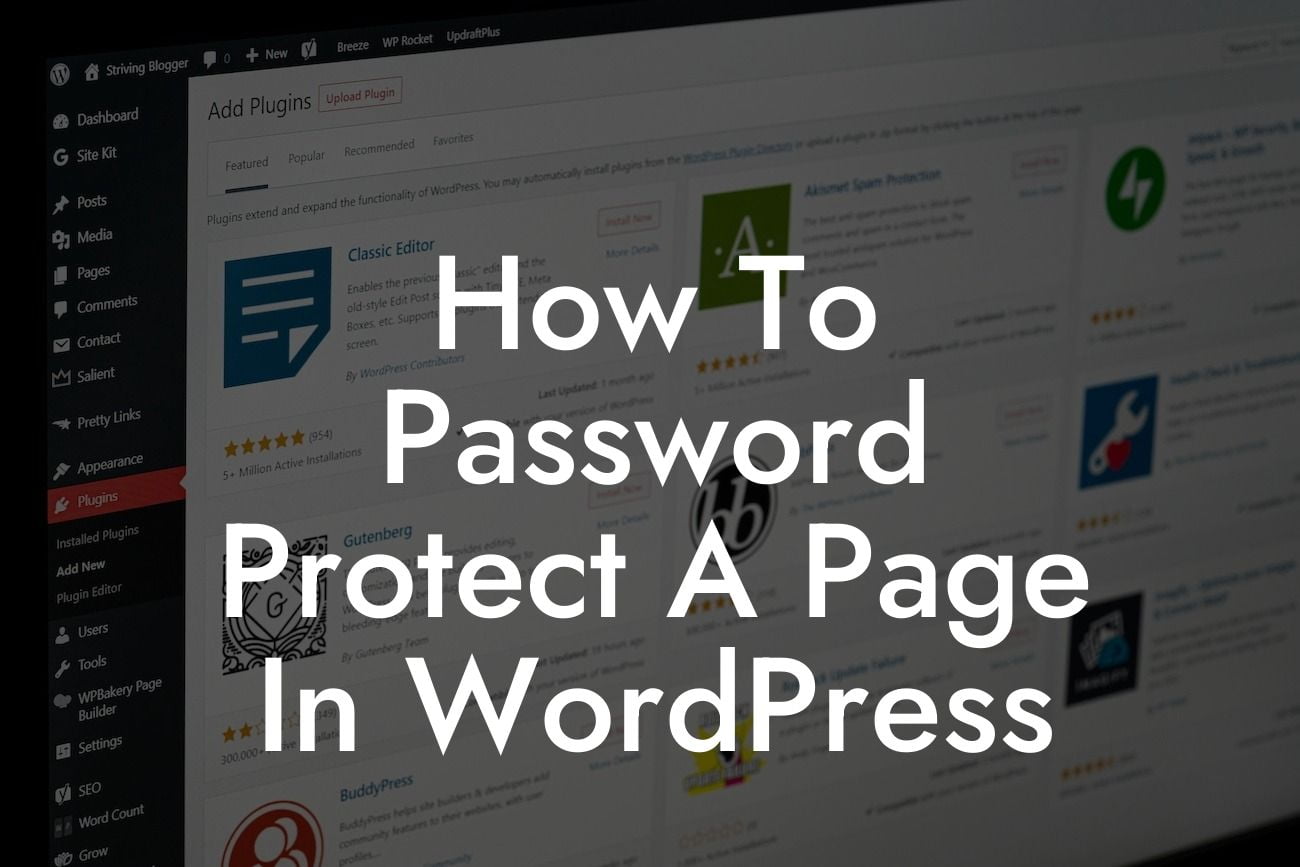Are you looking to restrict access to specific content on your WordPress website? Whether you want to create a members-only section or safeguard private information, password protecting a page can be the perfect solution. In this comprehensive guide, we will walk you through the process of password protecting a page in WordPress. With DamnWoo's user-friendly plugins designed exclusively for small businesses and entrepreneurs, you can ensure not only a secure online presence but also a seamless user experience.
To password protect a page in WordPress, follow these simple steps:
1. Install and activate the DamnWoo Login Security plugin:
- Go to your WordPress dashboard and navigate to "Plugins."
- Click "Add New" and search for "DamnWoo Login Security."
Looking For a Custom QuickBook Integration?
- Install and activate the plugin.
2. Create a new page or edit an existing one:
- Go to "Pages" in your WordPress dashboard.
- Select the page you want to password protect or create a new page.
- Click "Edit" to open the page editor.
3. Configure the password protection settings:
- Scroll down to the "Login Security" section.
- Check the box that says "Enable Password Protection."
- Enter a secure password in the provided field.
4. Customize access restrictions:
- By default, the protected page is accessible to all visitors.
- If you want to restrict access to certain user roles or specific users, click "Advanced Settings" and make the necessary selections.
5. Publish or update the page:
- Once you have configured the settings according to your requirements, click "Publish" or "Update" to save the changes.
How To Password Protect A Page In Wordpress Example:
Imagine you run a membership site where you provide exclusive content and resources to your subscribers. By password protecting your premium content pages using DamnWoo's Login Security plugin, you can ensure that only your subscribed members have access, protecting your valuable materials and enhancing the overall membership experience.
Congratulations! You have successfully learned how to password protect a page in WordPress. By leveraging DamnWoo's exceptional plugins, you can now take your website security to the next level and provide a personalized and secure user experience. Don't stop here; explore our other informative guides on DamnWoo and discover more ways to optimize your website. Try one of our awesome plugins today and witness the extraordinary transformation of your online presence. Remember to share this article with others who can benefit from these valuable insights. Together, let's elevate your success!













